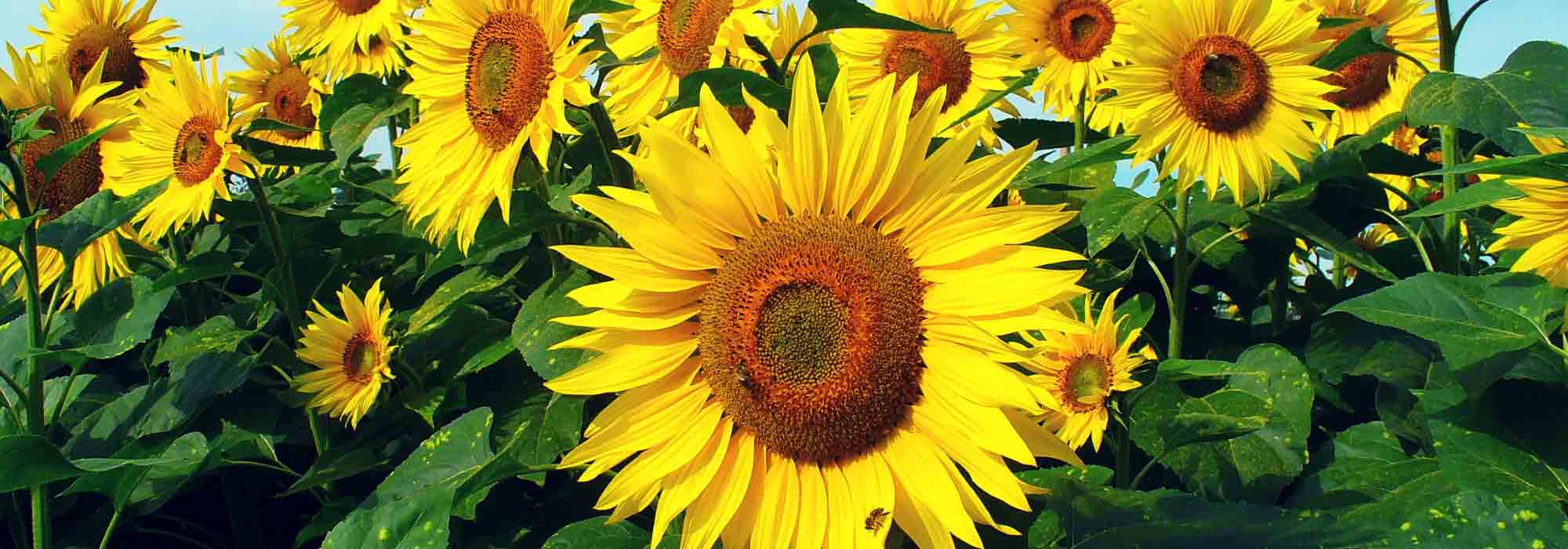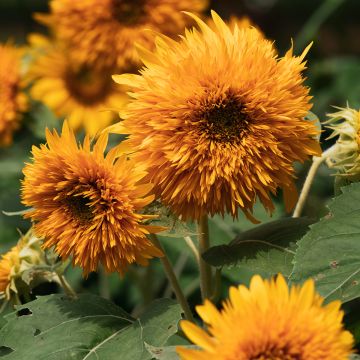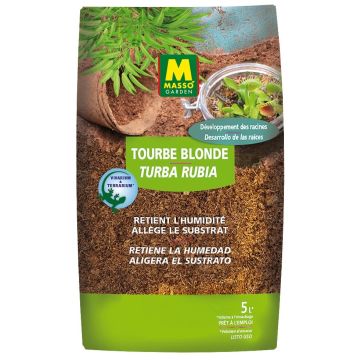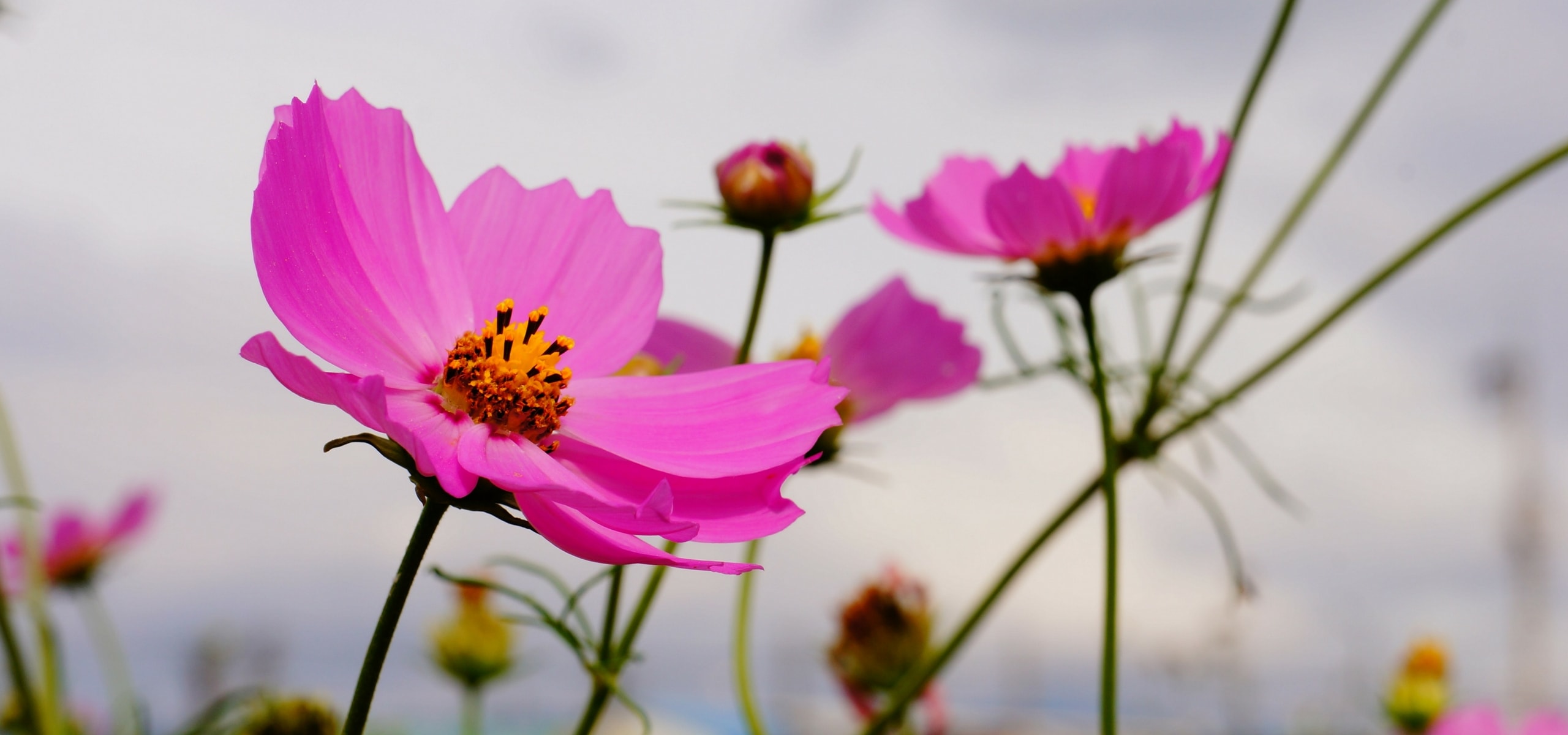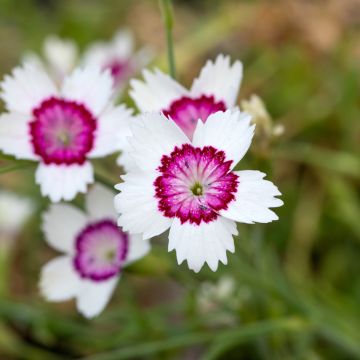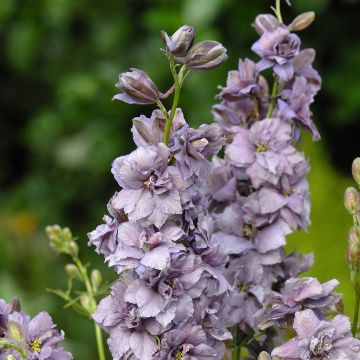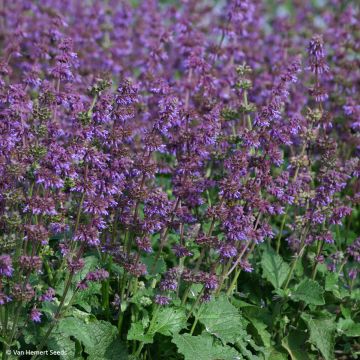

Helianthus annuus Ring of Fire F1 seeds - Annual sunflower
Helianthus annuus Ring of Fire F1 seeds - Annual sunflower
Helianthus annuus Ring of Fire F1
Sunflower
Special offer!
Receive a €20 voucher for any order over €90 (excluding delivery costs, credit notes, and plastic-free options)!
1- Add your favorite plants to your cart.
2- Once you have reached €90, confirm your order (you can even choose the delivery date!).
3- As soon as your order is shipped, you will receive an email containing your voucher code, valid for 3 months (90 days).
Your voucher is unique and can only be used once, for any order with a minimum value of €20, excluding delivery costs.
Can be combined with other current offers, non-divisible and non-refundable.
Home or relay delivery (depending on size and destination)
Schedule delivery date,
and select date in basket
This plant carries a 6 months recovery warranty
More information
We guarantee the quality of our plants for a full growing cycle, and will replace at our expense any plant that fails to recover under normal climatic and planting conditions.
Does this plant fit my garden?
Set up your Plantfit profile →
Description
Helianthus annuus 'Ring of Fire' F1 is a fairly tall, well-branched annual sunflower with flowers harmoniously blending warm shades with yellow petals marked with red near the centre. The heart of the flower is almost black. Although an annual, this plant adds structure to the back of a country-style border before being used in lovely bouquets. Easy to sow and grow in the sun, in all types of well-drained soil. Use it in ornamental gardens as well as in vegetable gardens.
'Helianthus annuus' is none other than the famous sunflower grown on a large scale for the oil extracted from its seeds. This tall annual plant from the Asteraceae family, domesticated by humans for a long time, has a controversial origin, but it is known to be native to the American continent. The 'Ring of Fire F1' variety is a new horticultural selection with stems that naturally branch without the need for pinching. The vigorous and bushy plants reach a height of 1 to 1.50 m within 3 months. Each main stem produces numerous lateral branches, each bearing inflorescences. These flower head heads are yellow, adorned with a red ring near the centre, and a very dark heart. Flowering occurs from June to September-October. Under optimal conditions, there are 12 weeks between sowing and the start of flowering. The foliage consists of medium green, simple, cordate (heart-shaped), alternate leaves, sometimes opposite at the base. They are attached to the stem by a long or short petiole and feel rough to the touch. Highly attractive to pollinating insects, flowering gives way to seeds that birds and certain small animals enjoy.
The 'Ring of Fire F1' Sunflower thrives in borders, preferably at the back, in sunny, well-drained soil that is not too dry. In the vegetable garden, it brings its ornamental qualities and possibly a bit of shade. It is easy to sow and grow, ideal for introducing children to gardening. Although an annual, it is a structuring plant, comfortable in countryside gardens or wilder areas of the garden, alongside grasses, thistles, ornamental garlic and gaillardias, for example. This variety is ideal for cutting thanks to its numerous flowers and good vase life.
Before flowering, the plant optimises its growth by following the sun's path. This phenomenon, called heliotropism, has given rise to some of its common names: Heliotrope, Sunflower, Garden Sun.
Sunflowers in the kitchen: The buds, petals, and seeds are edible. Add some petals to a green salad for colour contrast and a nutty flavour. Green buds can be blanched, then sautéed in garlic butter. Their flavour is similar to that of Jerusalem artichokes. The seed kernel can be eaten raw or roasted.
An ecological asset: Throughout summer, the honey-producing flowers of Sunflowers attract pollinating insects and butterflies to your garden. A great way to improve the ecosystem and promote fruit and vegetable production.
The oil-rich seeds are particularly appreciated by birds (Parrots, Tits, Doves, Goldfinches, Siskins, Nuthatches, Finches...). After flowering, harvest them to feed birds during winter scarcity.
Flowering
Foliage
Plant habit
Botanical data
Helianthus
annuus
Ring of Fire F1
Asteraceae
Sunflower
Cultivar or hybrid
Other Sunflower seeds
View all →Planting and care
Sow the Sunflower 'Ring of Fire' from March to May in pots. Use good quality compost sieved on the surface to bind the seed to its substrate. Before sowing, lightly press down the compost with a board. Place 2 seeds 10 cm apart in each pot. Cover the seeds by sprinkling compost on top or vermiculite, lightly press down and water copiously with a fine rain. Place your pots in the light, without direct sunlight, at a temperature of 20°C to 25°C. Lower the temperature at night to 17°C to create a beneficial alternation for germination.
Seedlings will take about 21 days to emerge. Keep the compost moist, but not excessively during growth. 15 days before their final planting, start gradually acclimatising them to a temperature of 15°C.
By late May to early June, the garden temperature will be warm enough to plant out your young plants. Choose a sunny location. Add a good shovelful of compost to each planting hole. Space your plants 45 cm apart.
Seeds can be sown directly in place in May. By staggering your sowings, you can extend flowering until autumn.
Protect your seedlings from attacks by snails and slugs that are fond of these young plants. Sowing chives near your sunflowers can deter aphids.
Sowing period
Intended location
Planting & care advice
This item has not been reviewed yet - be the first to leave a review about it.
Similar products
Haven't found what you were looking for?
Hardiness is the lowest winter temperature a plant can endure without suffering serious damage or even dying. However, hardiness is affected by location (a sheltered area, such as a patio), protection (winter cover) and soil type (hardiness is improved by well-drained soil).

Photo Sharing Terms & Conditions
In order to encourage gardeners to interact and share their experiences, Promesse de fleurs offers various media enabling content to be uploaded onto its Site - in particular via the ‘Photo sharing’ module.
The User agrees to refrain from:
- Posting any content that is illegal, prejudicial, insulting, racist, inciteful to hatred, revisionist, contrary to public decency, that infringes on privacy or on the privacy rights of third parties, in particular the publicity rights of persons and goods, intellectual property rights, or the right to privacy.
- Submitting content on behalf of a third party;
- Impersonate the identity of a third party and/or publish any personal information about a third party;
In general, the User undertakes to refrain from any unethical behaviour.
All Content (in particular text, comments, files, images, photos, videos, creative works, etc.), which may be subject to property or intellectual property rights, image or other private rights, shall remain the property of the User, subject to the limited rights granted by the terms of the licence granted by Promesse de fleurs as stated below. Users are at liberty to publish or not to publish such Content on the Site, notably via the ‘Photo Sharing’ facility, and accept that this Content shall be made public and freely accessible, notably on the Internet.
Users further acknowledge, undertake to have ,and guarantee that they hold all necessary rights and permissions to publish such material on the Site, in particular with regard to the legislation in force pertaining to any privacy, property, intellectual property, image, or contractual rights, or rights of any other nature. By publishing such Content on the Site, Users acknowledge accepting full liability as publishers of the Content within the meaning of the law, and grant Promesse de fleurs, free of charge, an inclusive, worldwide licence for the said Content for the entire duration of its publication, including all reproduction, representation, up/downloading, displaying, performing, transmission, and storage rights.
Users also grant permission for their name to be linked to the Content and accept that this link may not always be made available.
By engaging in posting material, Users consent to their Content becoming automatically accessible on the Internet, in particular on other sites and/or blogs and/or web pages of the Promesse de fleurs site, including in particular social pages and the Promesse de fleurs catalogue.
Users may secure the removal of entrusted content free of charge by issuing a simple request via our contact form.
The flowering period indicated on our website applies to countries and regions located in USDA zone 8 (France, the United Kingdom, Ireland, the Netherlands, etc.)
It will vary according to where you live:
- In zones 9 to 10 (Italy, Spain, Greece, etc.), flowering will occur about 2 to 4 weeks earlier.
- In zones 6 to 7 (Germany, Poland, Slovenia, and lower mountainous regions), flowering will be delayed by 2 to 3 weeks.
- In zone 5 (Central Europe, Scandinavia), blooming will be delayed by 3 to 5 weeks.
In temperate climates, pruning of spring-flowering shrubs (forsythia, spireas, etc.) should be done just after flowering.
Pruning of summer-flowering shrubs (Indian Lilac, Perovskia, etc.) can be done in winter or spring.
In cold regions as well as with frost-sensitive plants, avoid pruning too early when severe frosts may still occur.
The planting period indicated on our website applies to countries and regions located in USDA zone 8 (France, United Kingdom, Ireland, Netherlands).
It will vary according to where you live:
- In Mediterranean zones (Marseille, Madrid, Milan, etc.), autumn and winter are the best planting periods.
- In continental zones (Strasbourg, Munich, Vienna, etc.), delay planting by 2 to 3 weeks in spring and bring it forward by 2 to 4 weeks in autumn.
- In mountainous regions (the Alps, Pyrenees, Carpathians, etc.), it is best to plant in late spring (May-June) or late summer (August-September).
The harvesting period indicated on our website applies to countries and regions in USDA zone 8 (France, England, Ireland, the Netherlands).
In colder areas (Scandinavia, Poland, Austria...) fruit and vegetable harvests are likely to be delayed by 3-4 weeks.
In warmer areas (Italy, Spain, Greece, etc.), harvesting will probably take place earlier, depending on weather conditions.
The sowing periods indicated on our website apply to countries and regions within USDA Zone 8 (France, UK, Ireland, Netherlands).
In colder areas (Scandinavia, Poland, Austria...), delay any outdoor sowing by 3-4 weeks, or sow under glass.
In warmer climes (Italy, Spain, Greece, etc.), bring outdoor sowing forward by a few weeks.






























